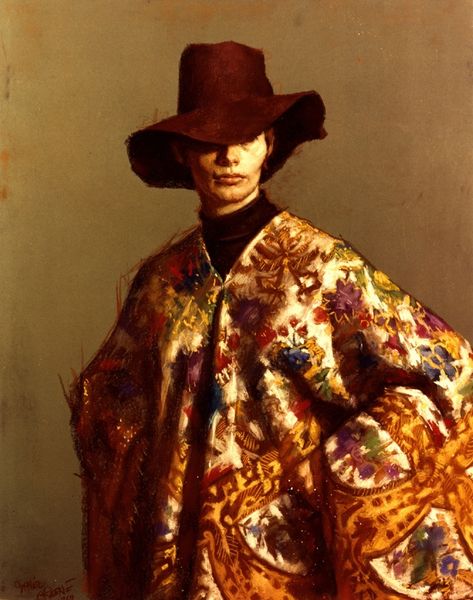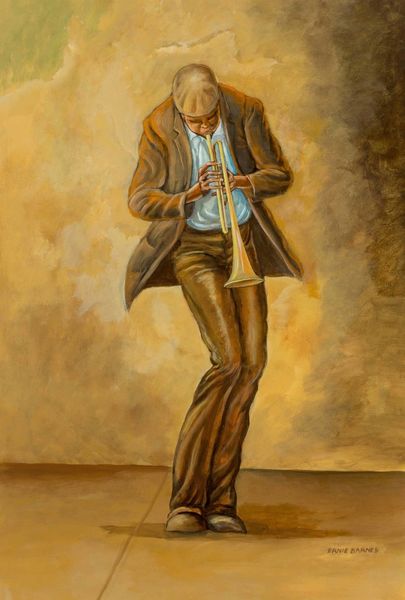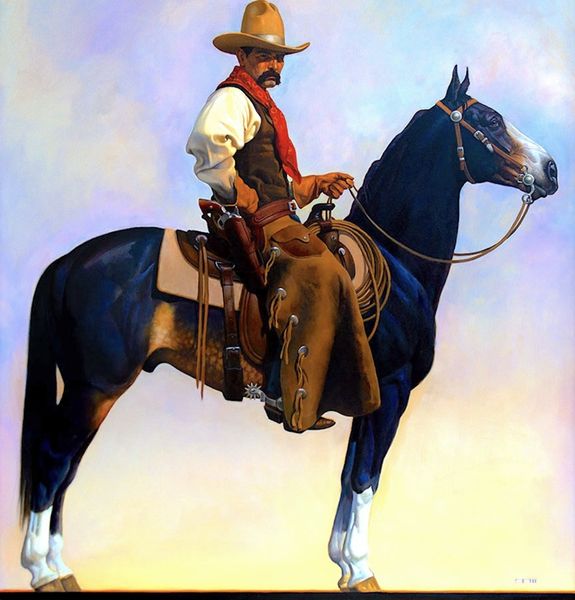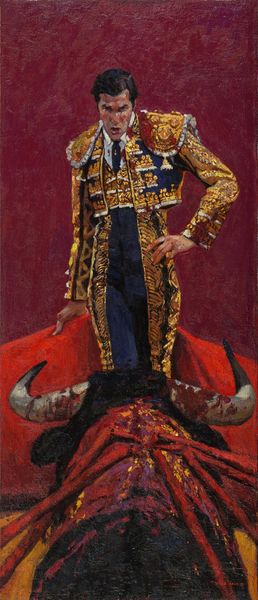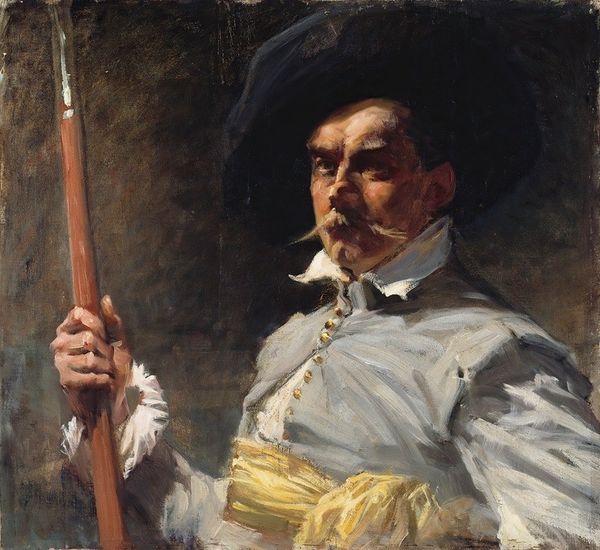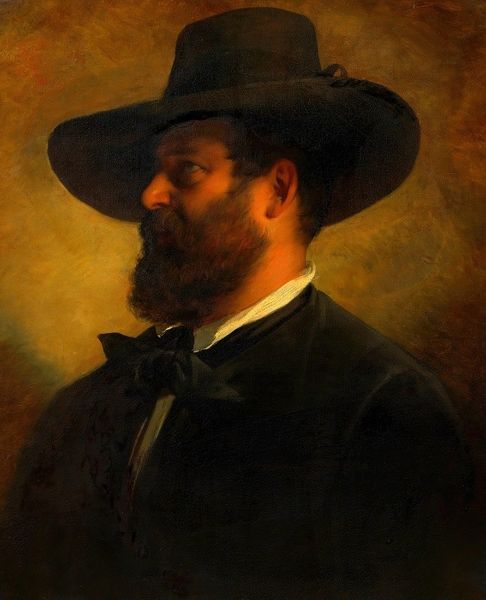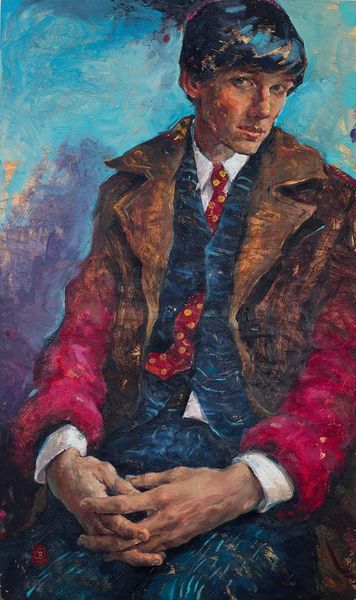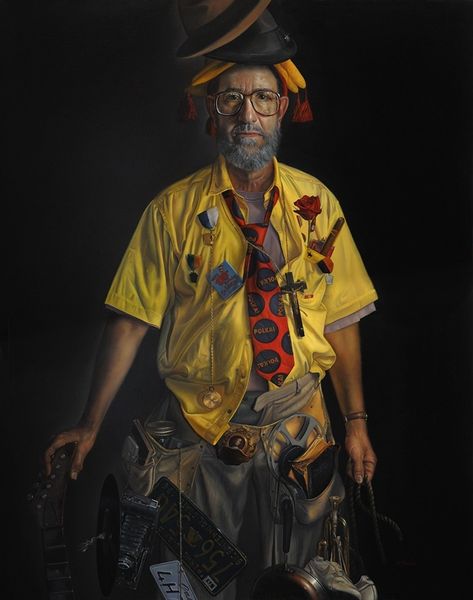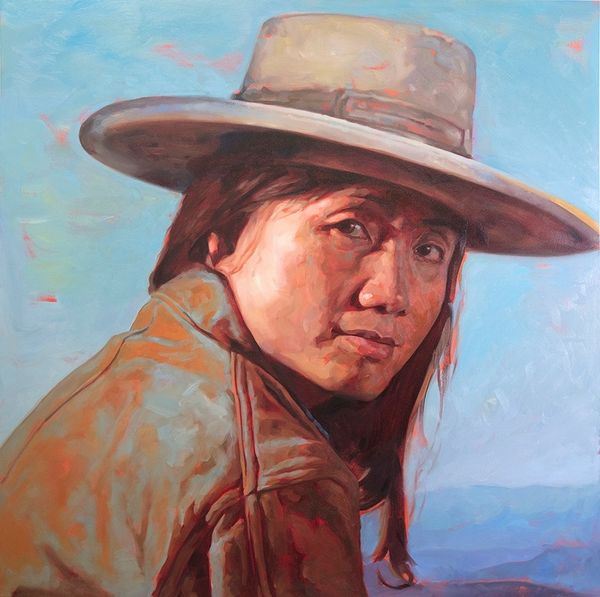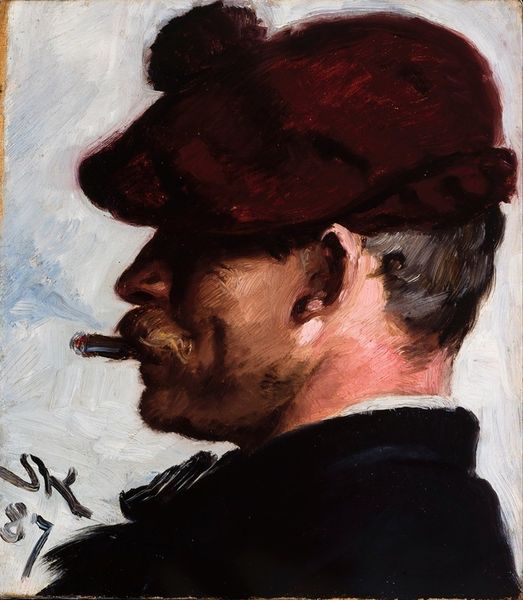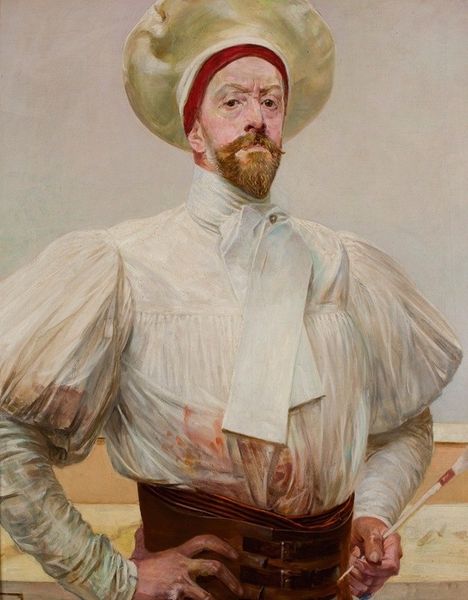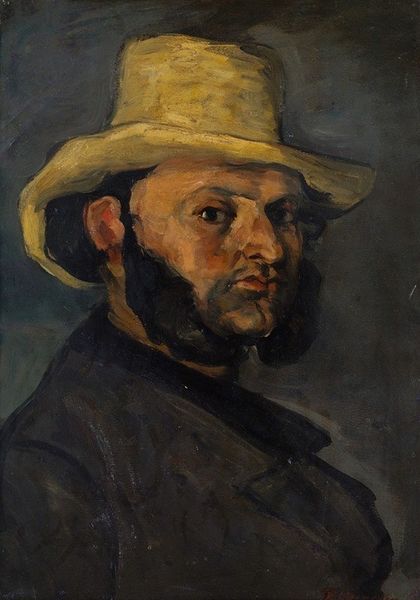
Copyright: Public Domain: Artvee
Curator: We're standing before Robert Henri's "Calero," completed in 1908. It's a striking oil portrait, one of many Henri made exploring different cultural identities. Editor: The first thing that hits me is the intensity. He looks right *through* you, doesn't he? And that bold, almost theatrical costuming against that inky black background? Curator: Exactly. Let’s examine the construction. The limited palette directs our attention to the sitter’s face. Note how Henri uses broad brushstrokes to convey the ornate costume, achieving visual impact through juxtaposed tones rather than meticulous detail. It's a powerful interplay of shape and form. Editor: You know, that gold embellishment looks less like careful craft and more like slashes of confidence! And the hat, perched just so, is rather wonderful. I get a sense of a man both proud and a little defiant. I imagine him stepping out of a dream, or maybe a vibrant memory. Curator: Indeed, one could interpret his gaze as embodying a certain challenge. Semiotically, we observe how Henri deploys the matador's attire—the *traje de luces*—to symbolize themes of courage, spectacle, and national identity within the social framework. The application of impasto around his shoulder furthers this sense of spectacle. Editor: I can't help but feel a connection to something timeless in him. The portrait’s darkness seems to conceal something precious, vulnerable beneath the bravado. It’s funny – sometimes you see paintings and you think "this is exactly like a dream I once had". Curator: Dreams are intriguing expressions of our subconscious response. From a purely formalist angle, "Calero" marks Henri’s negotiation between capturing a specific likeness and rendering symbolic and cultural associations. Editor: "Calero" makes you think about what we show the world, and what we keep to ourselves, doesn't it? A fascinating work, all those gilded details holding the shadow of something deep inside. Curator: I concur, the layered visual elements work together to construct meaning—both within the art object and extending towards wider contexts of representation. A successful formal study of a person.
Comments
No comments
Be the first to comment and join the conversation on the ultimate creative platform.

